#agile and devops
Explore tagged Tumblr posts
Text
#DevOps#Continuous Integration (CI)#Continuous Delivery (CD)#devops services#agile and devops#Infrastructure as Code(IaC)#DevSecOps
0 notes
Text
Embrace the Future with AI 🚀
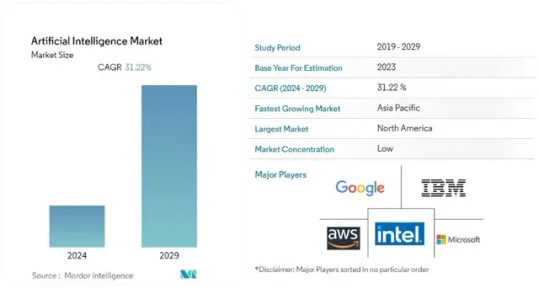
The AI industry is set to skyrocket from USD 2.41 trillion in 2023 to a projected USD 30.13 trillion by 2032, growing at a phenomenal CAGR of 32.4%! The AI market continues to experience robust growth driven by advancements in machine learning, natural language processing, and cloud computing. Key industry player heavily invests in AI to enhance their product offerings and gain competitive advantages.
Here is a brief analysis of why and how AI can transform businesses to stay ahead in the digital age.
Key Trends:
Predictive Analytics: There’s an increasing demand for predictive analytics solutions across various industries to leverage data-driven decision-making.
Data Generation: Massive growth in data generation due to technological advancements is pushing the demand for AI solutions.
Cloud Adoption: The adoption of cloud-based applications and services is accelerating AI implementation.
Consumer Experience: Companies are focusing on enhancing consumer experience through AI-driven personalized services.
Challenges:
Initial Costs: High initial costs and concerns over replacing the human workforce.
Skill Gap: A lack of skilled AI technicians and experts.
Data Privacy: Concerns regarding data privacy and security.
Vabro is excited to announce the launch of Vabro Genie, one of the most intelligent SaaS AI engines. Vabro Genie helps companies manage projects, DevOps, and workflows with unprecedented efficiency and intelligence. Don’t miss out on leveraging this game-changing tool!
Visit www.vabro.com
#ArtificialIntelligence#TechTrends#Innovation#Vabro#AI#VabroGenie#ProjectManagement#DevOps#Workflows#Scrum#Agile
3 notes
·
View notes
Text
Unleashing Efficiency: Containerization with Docker
Introduction: In the fast-paced world of modern IT, agility and efficiency reign supreme. Enter Docker - a revolutionary tool that has transformed the way applications are developed, deployed, and managed. Containerization with Docker has become a cornerstone of contemporary software development, offering unparalleled flexibility, scalability, and portability. In this blog, we'll explore the fundamentals of Docker containerization, its benefits, and practical insights into leveraging Docker for streamlining your development workflow.
Understanding Docker Containerization: At its core, Docker is an open-source platform that enables developers to package applications and their dependencies into lightweight, self-contained units known as containers. Unlike traditional virtualization, where each application runs on its own guest operating system, Docker containers share the host operating system's kernel, resulting in significant resource savings and improved performance.
Key Benefits of Docker Containerization:
Portability: Docker containers encapsulate the application code, runtime, libraries, and dependencies, making them portable across different environments, from development to production.
Isolation: Containers provide a high degree of isolation, ensuring that applications run independently of each other without interference, thus enhancing security and stability.
Scalability: Docker's architecture facilitates effortless scaling by allowing applications to be deployed and replicated across multiple containers, enabling seamless horizontal scaling as demand fluctuates.
Consistency: With Docker, developers can create standardized environments using Dockerfiles and Docker Compose, ensuring consistency between development, testing, and production environments.
Speed: Docker accelerates the development lifecycle by reducing the time spent on setting up development environments, debugging compatibility issues, and deploying applications.
Getting Started with Docker: To embark on your Docker journey, begin by installing Docker Desktop or Docker Engine on your development machine. Docker Desktop provides a user-friendly interface for managing containers, while Docker Engine offers a command-line interface for advanced users.
Once Docker is installed, you can start building and running containers using Docker's command-line interface (CLI). The basic workflow involves:
Writing a Dockerfile: A text file that contains instructions for building a Docker image, specifying the base image, dependencies, environment variables, and commands to run.
Building Docker Images: Use the docker build command to build a Docker image from the Dockerfile.
Running Containers: Utilize the docker run command to create and run containers based on the Docker images.
Managing Containers: Docker provides a range of commands for managing containers, including starting, stopping, restarting, and removing containers.
Best Practices for Docker Containerization: To maximize the benefits of Docker containerization, consider the following best practices:
Keep Containers Lightweight: Minimize the size of Docker images by removing unnecessary dependencies and optimizing Dockerfiles.
Use Multi-Stage Builds: Employ multi-stage builds to reduce the size of Docker images and improve build times.
Utilize Docker Compose: Docker Compose simplifies the management of multi-container applications by defining them in a single YAML file.
Implement Health Checks: Define health checks in Dockerfiles to ensure that containers are functioning correctly and automatically restart them if they fail.
Secure Containers: Follow security best practices, such as running containers with non-root users, limiting container privileges, and regularly updating base images to patch vulnerabilities.
Conclusion: Docker containerization has revolutionized the way applications are developed, deployed, and managed, offering unparalleled agility, efficiency, and scalability. By embracing Docker, developers can streamline their development workflow, accelerate the deployment process, and improve the consistency and reliability of their applications. Whether you're a seasoned developer or just getting started, Docker opens up a world of possibilities, empowering you to build and deploy applications with ease in today's fast-paced digital landscape.
For more details visit www.qcsdclabs.com
#redhat#linux#docker#aws#agile#agiledevelopment#container#redhatcourses#information technology#ContainerSecurity#ContainerDeployment#DockerSwarm#Kubernetes#ContainerOrchestration#DevOps
5 notes
·
View notes
Text
#DevOps lifecycle#components of devops lifecycle#different phases in devops lifecycle#best devops consulting in toronto#best devops consulting in canada#DevOps#kubernetes#docker#agile
2 notes
·
View notes
Photo

#Innova8 combining #designthinking #servicedesign and #userexperience #customer validated services and products Innova8™ combines design thinking, service design and user experience within an 8 hour process, that takes #AgileWorldInc #AgileTransformation #AgileFinOps #LeanPortfolioManagement https://agile-world.us/innova8-combining-design-thinking-service-design-and-user-experience/?utm_source=tumblr&utm_medium=%23AgileWorld&utm_campaign=%23AgileWorld
#karlsmithuserexperienceu#hourinnvovation#agile#agilehumans#AgileWorld#AgileWorldUSA#Design#DesignThinking#DevOps#Digital#HumanCentered#INNOVATION#Lean#OrganisationalDesign
2 notes
·
View notes
Text
Full Stack Development: Using DevOps and Agile Practices for Success
In today’s fast-paced and highly competitive tech industry, the demand for Full Stack Developers is steadily on the rise. These versatile professionals possess a unique blend of skills that enable them to handle both the front-end and back-end aspects of software development. However, to excel in this role and meet the ever-evolving demands of modern software development, Full Stack Developers are increasingly turning to DevOps and Agile practices. In this comprehensive guide, we will explore how the combination of Full Stack Development with DevOps and Agile methodologies can lead to unparalleled success in the world of software development.
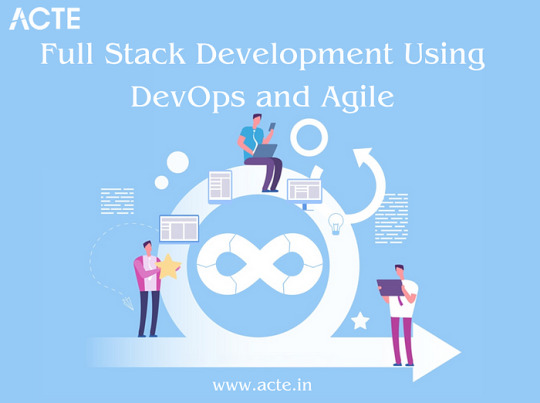
Full Stack Development: A Brief Overview
Full Stack Development refers to the practice of working on all aspects of a software application, from the user interface (UI) and user experience (UX) on the front end to server-side scripting, databases, and infrastructure on the back end. It requires a broad skill set and the ability to handle various technologies and programming languages.
The Significance of DevOps and Agile Practices
The environment for software development has changed significantly in recent years. The adoption of DevOps and Agile practices has become a cornerstone of modern software development. DevOps focuses on automating and streamlining the development and deployment processes, while Agile methodologies promote collaboration, flexibility, and iterative development. Together, they offer a powerful approach to software development that enhances efficiency, quality, and project success. In this blog, we will delve into the following key areas:
Understanding Full Stack Development
Defining Full Stack Development
We will start by defining Full Stack Development and elucidating its pivotal role in creating end-to-end solutions. Full Stack Developers are akin to the Swiss Army knives of the development world, capable of handling every aspect of a project.
Key Responsibilities of a Full Stack Developer
We will explore the multifaceted responsibilities of Full Stack Developers, from designing user interfaces to managing databases and everything in between. Understanding these responsibilities is crucial to grasping the challenges they face.
DevOps’s Importance in Full Stack Development
Unpacking DevOps
A collection of principles known as DevOps aims to eliminate the divide between development and operations teams. We will delve into what DevOps entails and why it matters in Full Stack Development. The benefits of embracing DevOps principles will also be discussed.
Agile Methodologies in Full Stack Development
Introducing Agile Methodologies
Agile methodologies like Scrum and Kanban have gained immense popularity due to their effectiveness in fostering collaboration and adaptability. We will introduce these methodologies and explain how they enhance project management and teamwork in Full Stack Development.
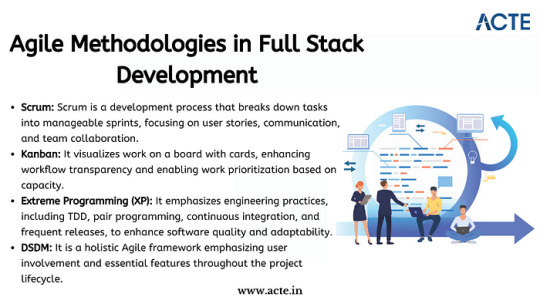
Synergy Between DevOps and Agile
The Power of Collaboration
We will highlight how DevOps and Agile practices complement each other, creating a synergy that streamlines the entire development process. By aligning development, testing, and deployment, this synergy results in faster delivery and higher-quality software.
Tools and Technologies for DevOps in Full Stack Development
Essential DevOps Tools
DevOps relies on a suite of tools and technologies, such as Jenkins, Docker, and Kubernetes, to automate and manage various aspects of the development pipeline. We will provide an overview of these tools and explain how they can be harnessed in Full Stack Development projects.
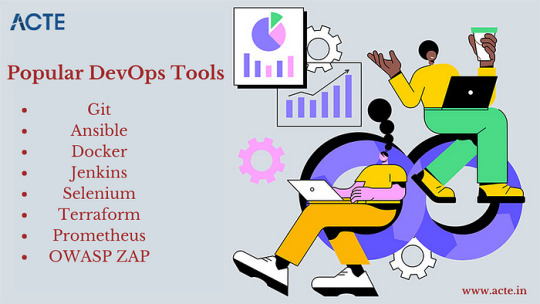
Implementing Agile in Full Stack Projects
Agile Implementation Strategies
We will delve into practical strategies for implementing Agile methodologies in Full Stack projects. Topics will include sprint planning, backlog management, and conducting effective stand-up meetings.
Best Practices for Agile Integration
We will share best practices for incorporating Agile principles into Full Stack Development, ensuring that projects are nimble, adaptable, and responsive to changing requirements.
Learning Resources and Real-World Examples
To gain a deeper understanding, ACTE Institute present case studies and real-world examples of successful Full Stack Development projects that leveraged DevOps and Agile practices. These stories will offer valuable insights into best practices and lessons learned. Consider enrolling in accredited full stack developer training course to increase your full stack proficiency.
Challenges and Solutions
Addressing Common Challenges
No journey is without its obstacles, and Full Stack Developers using DevOps and Agile practices may encounter challenges. We will identify these common roadblocks and provide practical solutions and tips for overcoming them.
Benefits and Outcomes
The Fruits of Collaboration
In this section, we will discuss the tangible benefits and outcomes of integrating DevOps and Agile practices in Full Stack projects. Faster development cycles, improved product quality, and enhanced customer satisfaction are among the rewards.
In conclusion, this blog has explored the dynamic world of Full Stack Development and the pivotal role that DevOps and Agile practices play in achieving success in this field. Full Stack Developers are at the forefront of innovation, and by embracing these methodologies, they can enhance their efficiency, drive project success, and stay ahead in the ever-evolving tech landscape. We emphasize the importance of continuous learning and adaptation, as the tech industry continually evolves. DevOps and Agile practices provide a foundation for success, and we encourage readers to explore further resources, courses, and communities to foster their growth as Full Stack Developers. By doing so, they can contribute to the development of cutting-edge solutions and make a lasting impact in the world of software development.
#web development#full stack developer#devops#agile#education#information#technology#full stack web development#innovation
2 notes
·
View notes
Text

DevOps Evolution Model: Unlocking collaboration and agility to transform the software development process!
2 notes
·
View notes
Text
Azure devops engineer certification in Philadelphia
Become a certified Azure DevOps Engineer in Philadelphia! This certification validates your expertise in implementing DevOps practices, designing build and release pipelines, and managing infrastructure on the Azure platform.
0 notes
Text
How to Future-Proof Agile with Adaptive Software Development
Agile transformed software development by increasing teams flexible, more sensitive and efficient. Traditional agile methods, however, often try to maintain the pace with rapidly developing technologies, customer expectations and market disorders. Response? Adaptive software development (ASD)-A dynamic approach that increases agile methodologies by supporting continuous learning, iterative improvement and real-time adaptability.
At, CodeRower We get rid of software development, automation and digital transformation that integrate Adaptive principles of software development in the future of agile work-flows. This guide examines how to successfully accept ASD and ensure that your agile teams remain resistant to the ever-changing digital landscape.
What is Adaptive Software Development?
Adaptive software development (ASD) is a highly flexible and iterative approach that builds on agile methodologies. Unlike the traditional agil, which is governed by structured sprints, ASD focuses on continuous adaptation, allowing software to develop software in response to changing market needs.
Basic principles ASD:
Speculation: Planning is flexible, allowing space for unexpected changes.
Cooperation: Teams are constantly specifying and improving the software together.
Learning: constant increase in feedback loop and innovation.
ASD is designed for projects where the uncertainties are high, the requirements are smooth and innovations are essential. It allows faster relaxation, better adaptability and more resistant agile workflow.
How to the Future Agile Methodology Using Adaptive Software Development
Agile has been built for flexibility, but strict agile frames often do not achieve uncertainty, developing customer requirements and new technological progress. Adaptive software development solves these challenges by emphasizing continuous learning, cooperation and quick modifications during the software life cycle.
By inserting ASD principles into agile work-flows, businesses can wrap their development process in the future and remain before industrial trends.
How Adaptive Software Development Increases Agile Scalability and Flexibility
One of the main disadvantages of traditional agile frames is their scaling problems across large businesses and more projects. This is where adaptive software development excels.
Key benefits of ASD in agile scalability:
Incremental Development: Small, continuous iteration improves software adaptability.
Real-Time Decision-Production: Agile teams can turn on real -time market knowledge.
Automation and AI: Reduces manual intervention and speeds up development cycles.
By integrating these technologies, Agile teams can scale without compromising flexibility.
How to Implement Adaptive Software Development for Long-Term Agile Success
Implementation Adaptive Software Development in Agile requires strategic approach. So:
Step 1: Transition from fixed plans to continuous adaptation
Agile teams must accept a change as a basic principle. Instead of rigid sprint cycles, adaptive development relies on dynamic feedback loops to refine functions in real time.
Step 2: Using Cloud and Multiple Fiddles Saas Solutions
With SaaS platforms with multiple tenants, businesses can develop agile applications that scale effortlessly in various industries. CodeRower provides cutting-edge SaaS solutions that enable businesses to deploy agile, adaptive applications globally.
Step 3: Automate and Optimize Agile Pipe
Using CI/CD, DevOps and Ai-Managements, Agile teams can reduce developmental friction and improve software delivery efficiency. CodeRower DevOps integrate these tools to automate agile work-flows and provide faster release with higher reliability.
How to Balance the Development of Adaptive Software with Agile Project
Manage Agile projects requires collaboration, automation and smooth delivery of software. For integration ASD into agile project management must businesses:
Accept AI-driven projects for increased visibility.
Take advantage of data-based decisions you want to specify agile iterations.
Use Coderower Consulting for trouble-free agile and agile-as.
At CodeRower, we provide Agile project consultancy to help businesses align ASD strategies with their existing workflows, ensuring maximum efficiency and future readiness.
Why Adaptive Software Development is the Key to Future Agile Workflows
Agile is no longer just about fast iterations — it’s continuous development and adaptability. ASD ensures that Agile remains durable in a technologically controlled world:
Discovery AI, Cloud and Automation for real-time sensitivity.
Scale of Agile Methodologies for global applications based on SAAS.
It supports innovations through dynamic feedback loops and iterative improvements.
At Coderower we do not just build agile software-compile businesses with the best adaptive software development solutions that ensure their digital success.
Future-Proof Your Agile Development with CodeRower
Are you ready to develop your agile strategy with adaptive software development? CodeRower specializes in:
Custom software development that integrates adaptive methodology.
Multi-Taste Saas solutions for agile projects prepared for the future.
DevOps, AI and Automation Accelerate Agile Transform. Connect today with us to the future Your agile work procedures!
Conclusion
The digital world is constantly evolving and traditional agile methodology. It may no longer be sufficient to meet the requirements fast innovation, shift of customer expectations and comprehensive software ecosystems. Adaptive software development (ASD) entitles organizations to remain forward by sending real-time adaptability, automation of controlled AI and continuous learning-ensuring that the software remains modified, efficient and ready for the future.
At CodeRower, we help businesses and startups adaptive software development integration, cloud solutions, automation AI, DevOps and Multi-SaaS architecture into their agile workflows. Are you ready future your strategy? Contact Coderower, Today Explore how we can drive a digital transformation for your business!
FAQs
1. How does adaptive software development differ from traditional agile?
While agile and ASD focus on iterative development, ASD is one step further emphasizing adaptability in real time. Traditional agile follows pre-planned sprints, while ASD allows teams is constantly evolving on the basis of changing requirements, new technologies and customer feedback.
2. Can adaptive software development work with DevOps and CI/CD?
ASD adds devOps and continuous integration/continuous deployment (CI/CD) permits faster iteration, real-time testing and automated deployment. Helps to streamline agile workflows and ensure that new software updates are integrated into existing systems.
3. Is Adaptive Software Development suitable for all industries?
Yes! ASD is highly beneficial for industries where innovations and fast adaptations are necessary-for example FINTECH, Healthcare, Saas, E-Commerce and A-E-Ecored Applications. This is particularly useful for startups and navigation businesses of rapidly changing digital markets.
4. How does adaptive software development help in risk management?
ASD relieves the risks problems detection in time in the developmental cycle. Despite the loop of continuous learning and dynamic feedback. Teams can actively solve security vulnerability, performance and scalability before escalating.
#Adaptive Software Development#Future Of Agile#Agile Development#Software Innovation#Agile Transformation#DevOps Integration#AIInSoftware#Cloud Computing#Custom Software Development#SaaS Development#enterprise software
0 notes
Photo

(vía Un Líder Imperturbable)
0 notes
Text
What are the biggest challenges in achieving DevOps success?
Discover the common pitfalls that derail organizations and learn how to overcome them in our latest blog post.
📖 Read more: Common Pitfalls in DevOps Success Journey

🎓 Ready to take your knowledge further? Join our DevOps Foundation training and lead your team to success! �� Register now
#DevOps #TechLeadership #Agile #ContinuousImprovement #AdvisedSkills
1 note
·
View note
Text
Vabro - #1 Unified Platform to Streamline Your Workflows 🚀
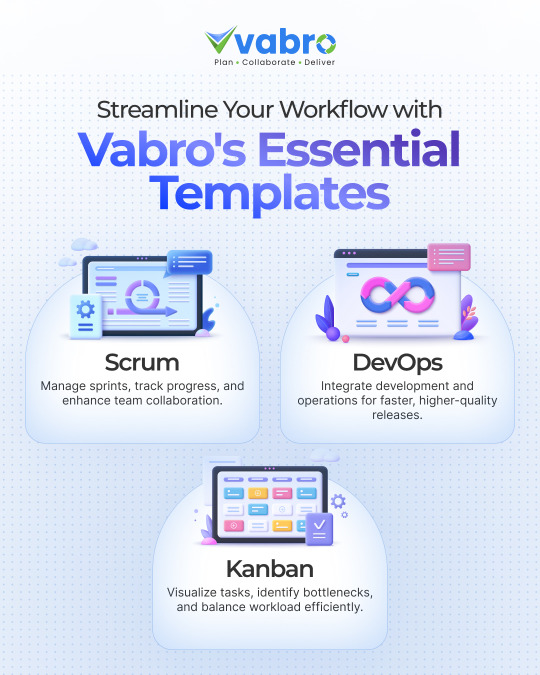
Tired of juggling multiple tools? Vabro's all-in-one platform seamlessly integrates Agile methodologies to meet your team's needs. Vabro's Essential Templates help you: 🔹 Manage sprints and boost collaboration with Scrum 🏃♂️ 🔹 Visualize tasks and optimize workload with Kanban 📊 🔹 Accelerate releases with DevOps 🚀 Say goodbye to siloed tools and hello to a unified platform. Vabro's customizable templates are a game-changer for teams of all sizes. Ready to transform your productivity? Please visit www.vabro.com today! 🔑
1 note
·
View note
Text
Yazılım Geliştirmede Kullanılan En Popüler Süreç Modelleri
Yazılım geliştirme süreçleri, projelerin verimli ve kaliteli bir şekilde tamamlanabilmesi için kullanılan yöntemler ve metodolojilerdir. Bu süreçler, yazılımın ihtiyaçlara göre doğru şekilde geliştirilmesini, test edilmesini ve teslim edilmesini sağlamak amacıyla yapılandırılır. İşte yazılım geliştirme süreçleri hakkında bazı ana konular: 1. Agile Yazılım Geliştirme Tanım: Agile, yazılım…
#Agile Yazılım Geliştirme#DevOps Yazılım Geliştirme#Extreme Programming XP Yazılım Geliştirme#Kanban Yazılım Geliştirme#Lean Yazılım Geliştirme#Scrum Yazılım Geliştirme#Waterfall Yazılım Geliştirme
0 notes
Text
Discover how partnering with a DevOps consulting company can streamline your software development process. Learn about the benefits of integrating Agile methodologies, automating workflows, and providing continuous application support to enhance collaboration, speed, and security in your organization. Explore how Impressico Business Solutions can help you succeed.
#DevOps Consulting Company#DevOps Services Company#DevOps Development Services#Agile Software Development#Application Support Services
0 notes
Text
0 notes
Text
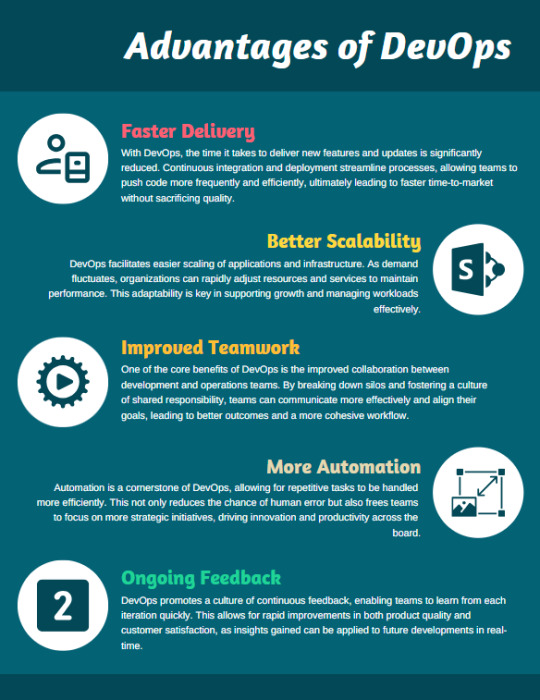
Unlock the Benefits of DevOps! 🚀
DevOps bridges the gap between development and operations, leading to faster delivery, improved collaboration, and higher software quality. Here’s what DevOps can do for your team:
Speed & Agility 🌐
Enhanced Collaboration 🤝
Reliability & Security 🔐
Continuous Improvement 🔄
Want to master DevOps? Check out our DevOps Online Training to get hands-on expertise and drive real results in your career! 🌟
0 notes